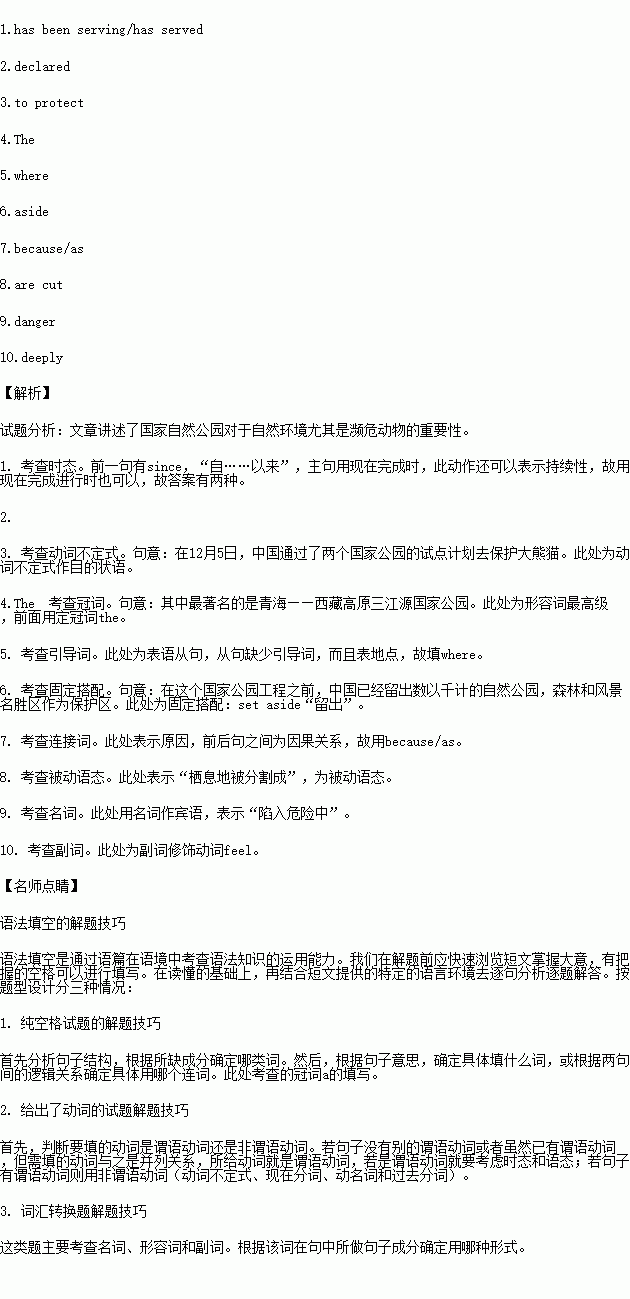题目内容
阅读下面材料,在空白处填入适当的内容(1个单词)或括号内单词的正确形式,并填在答题卡的相应位置。
In 1916 the United States started the world's first national park system. Since then, it 1. (serve)as a model for other countries that try to better protect the environment and let people enjoy nature.
A national park is a reserve of land 2. (declare) and owned by the government, protected from human development and pollution. Now China is planning its own national parks system. On Dec 5, China passed two pilot plans for national parks 3. (protect) the giant panda, Siberian tiger and Amur leopard.
But national parks are not only for animals. In mid-2015, China started to build pilot national parks in nine provinces. 4. most famous one is the Sanjiangyuan national park on the Qinghai-Tibet Plateau. It aims to protect China’s water source. Sanjiangyuan, or “Source of Three Rivers”, is 5. the Yellow, Yangtze, and Lancang rivers start.
Before this national park project, China had set 6. thousands of nature parks, forests and scenic areas as protected areas. However, they haven’t been managed well 7. too many different organizations have been involved in the protection of the different areas, according to the China Daily. Under the new plan, national parks will cover big areas and include different protected areas.
For example, the habitats of wild pandas lie in different provinces and 8. (cut) into even smaller pieces by railways, roads and power lines. This makes isolated panda groups more open to 9. (dangerous). The panda national park will cover all the habitats and make the protection of animals as comprehensive as possible.
But this increased protection doesn’t mean national parks will shut their doors to humans. Instead, the new system will offer people a chance to 10. (deep) feel nature.

